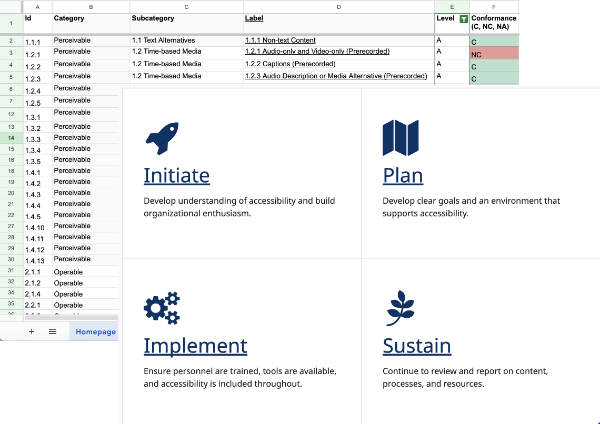Services
Accessibility and Privacy
Requirements

We help you determine the regulations protecting your target audience, whether located in New Zealand, Europe, the United States, or another country.
Assessments
We identify a representative sample from your product and evaluate it according to the WCAG (Web Content Accessibility Guidelines), the international standard most regulations rely on.
Strategy
We design a plan to let your product progressively reach compliance and sustain it. Actions include assessments, raising awareness, training collaborators, and integrating accessibility in your design, development and testing processes, as well as in the contracts with your partners.
If your application is developed by another company, we can either guide them or fix things under their control.
Book a Complimentary Callto Learn If You're Concerned
Design & Development
Specifications
We have a detailed template with the information we need to plan a project. How much you can fill yourself depends on your understanding of web technologies and the time you can dedicate to it. We are happy to let you do as much as you wish, and provide what is missing as a service.
Predictable Costs and Timeline
Once the requirements are defined, we make a quote with a roadmap, including two iterations for each step. We can adjust the quote and reduce the number of iterations to lower the cost or increase it if you need more control.
We fix any bug or adjustment to meet the requirements under the initial contract during 3 months after delivery. Then you can switch to a maintenance contract.
Maintenance
You buy one or several hours of maintenance in advance.
- When a new bug is filed, we qualify it within 24 hours: complexity, priority, hints for solutions. We can fix the issues either as soon as possible or on a per week basis, depending on the volume.
- When a new evolution is requested, we provide a first answer within 5 working days.
When the time is over, you get a report with the details of what have been done.
Technical Decisions
We use the following method to support technical decisions:
- Identify stakeholders
- Identify possible options (investigate similar products)
- Identify constraints, existing stack, prior decisions
- Identify decision drivers: common drivers usually include cost, efficiency, robustness; some can be specific to a project
- Analyse each option for each driver
- Summarise the most promising options, with a recommendation, and discuss them with stakeholders
- Document the final decision in an ADR (Architecture Decision Record)
- Define a roadmap to implement the choice